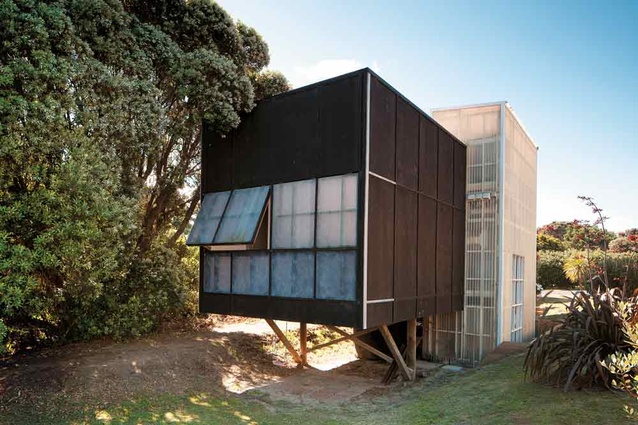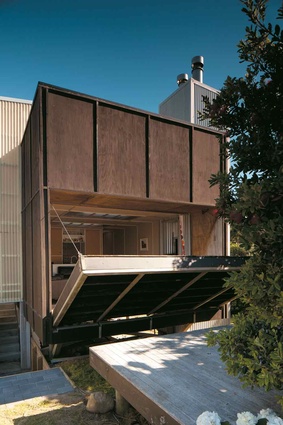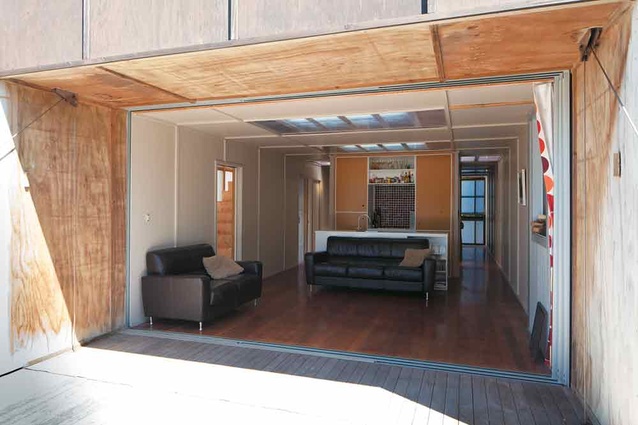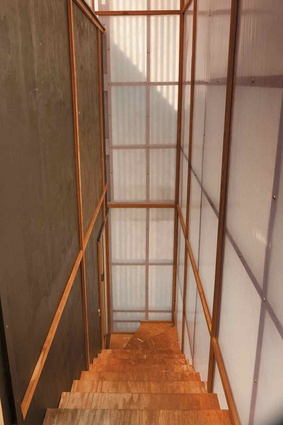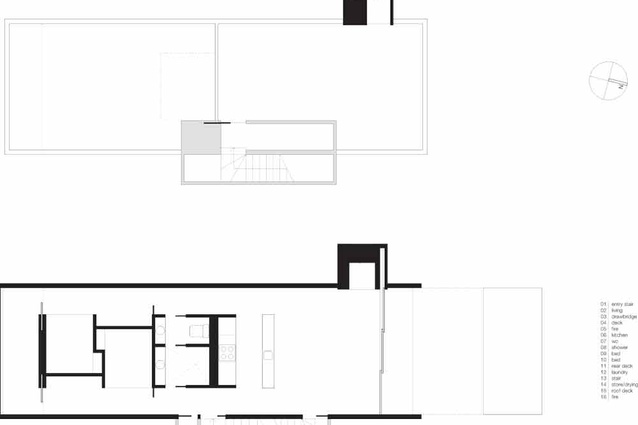Houses Revisited: Whiritoa house
An exercise in thoughtful use of space and materials by Matter Architects, first published in 2012.
Whiritoa is a small town in the Coromandel. It doesn’t have a lot of infrastructure and due to some physical constraints – like being hemmed in by two bluffs – it has stayed quite small. The fact that it will probably remain small and has the characteristics of a yesteryear beach village appealed to designer John Holley and influenced his approach to the project.
It is a family-oriented place, the roads are quiet and it is on the beach. Whiritoa means shifting sands and there can be quite big waves, making it a popular spot for surfing.
The site Holley chose is not without difficulties – small, narrow, and in a hollow. It is also a flood plane, so the ground floor needed to sit above the level of the footpath at the edge of the site, and there is a council drain easement along one side and the rear of the section, which further reduced the possible footprint of the house. The challenges, Holley says, are probably why the site had been left on the market.
The flood plane dictated that the house be on stilts. The simple, square box-like form of the structure is a direct reference to the boat sheds he sees around Auckland’s bays, says Holley. The simple structure, the modulated cladding, and the openings at each end are each quoted in the house. When the weather is good the under-space created by the stilts is a great shaded spot to play, and a swing hangs there.
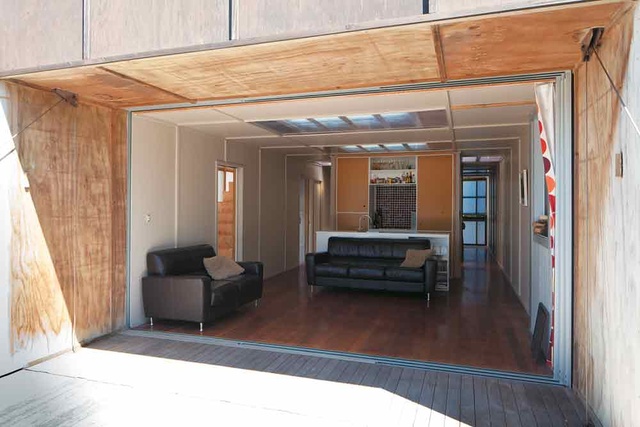
At one end of the house the exterior wall folds down like a drawbridge, and connects up with a section of floating deck at the edge of the site to create a large deck and open the whole north side of the house. The deck is very near the road and is a lovely spot to interact with the residents of the small community and other holidaymakers. Upstairs on the rooftop deck there is greater privacy and views of the beach and the surrounds. It has an outdoor fireplace for colder nights. The house closes up like a box when it is not inhabited, making it safe and secure.
The functional parts of the house - the kitchen, bathroom, and two sleeping boxes - all form a smaller box shape that was dropped into the larger exterior box. Stairs leading to the front door, and then on to the rooftop deck sit outside of the box structure and are covered with translucent corrugated polycarbonate, which resembles a glowing lantern when the lights are on at night.
This small house is an exercise in thoughtful use of space and materials. It has risen above the challenges that the site presented, to become a recognisable feature of the local landscape.
Click here to see more Houses Revisited. And sign up to our email newsletters to receive Houses Revisited straight to your inbox.
Note: These are stories from our archives and, since the time of writing, some details may have changed including names, personnel of specific firms, registration status, etc.

